15 Dec 7 Convincing Reasons Why Your Basement Needs Glass Block Windows
Most of our adult life has been spent in NYC apartments – we didn’t know much about glass block windows until we moved to the mid-west.
They always reminded me of the 80’s.
And turns out I’m not alone. Once again, the 80s took something and ran….faaaaaar.
But we did our research and decided to up our basement window game in our Columbus, OH fourplex. This is what we learned about glass block windows along the way.
WHAT IS A GLASS BLOCK WINDOW EXACTLY?
Sometimes called glass bricks, glass blocks are usually anywhere from 2” – 3” in depth, or sometimes deeper, and look like building blocks. While they do let light through they do not provide the same clarity as regular glass.
They are most often seen as glass squares, but they can be made into other shapes, such as hexagons and they can be curved and used as end blocks to complete or enhance a design.
They have been used as interior walls, windows, and exterior walls but can also be used for flooring and furniture.
Glass block windows can be decorative, but they’re also a fantastic security feature. Due to their density and construction, they are near impossible to break through -unlike your typical residential or commercial window.
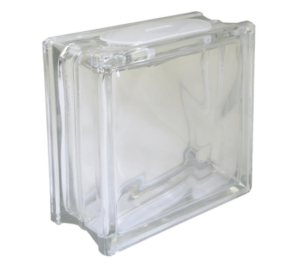
HISTORY OF GLASS BLOCK WINDOWS
Glass alone is one of the most amazing inventions of our time. It’s construction into glass blocks is also pretty interesting and goes beyond the way we usually use it for basement windows.
Glass blocks components can be found in packaging, biotechnology, dinnerware, and other common products.
Because the glass block is so incredibly durable while still be transparent AND has insulating features -it make this power house resource deserving of a second look.
And while its use in the 80s is probably the only thing you can think of when you hear the words “glass block” we promise you -if you think outside the box a little the glass block might be the very thing to set your next design apart from anything you’ve ever done before.
And, if nothing else, see its importance for any basement windows you are considering making more secure.
Early Use
Glass blocks were originally introduced and designed for the very reason Nick and I use it in most of our residential projects -as windows. However, at first, they were used as windows for their transparency and beauty -not so much for their durability and security.
Glass blocks were even used on ships way back in the day! They were called “deck prisms” and they allowed light to enter to work areas below the deck. Workers didn’t have to rely on candles or oil lamps for light which cut down on fires.
You may have seen them embedded in some of the sidewalks you walk on. Also known as sidewalk prisms, vault lights, or pavement lights, these glass blocks weren’t decorative. They were a way for the nearby businesses who had a shipping or receiving room below ground to receive light.
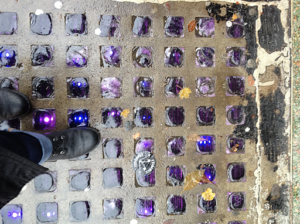
Original sidewalk prisms in front of 440 West Pender St. Photo: C. Hagemoen, CC-BY-SA 4.0.
Glass Block Windows in Modern Architecture
In the early 1900s all the way through today, interiors have benefitted from the prism effect glass blocks have. They let light in without being fully transparent. Like with vault lights, underground train stations have used them to emit light from above.
Factories and shopping facilities have used them to divide space while still letting light flow throughout.
Glass blocks were a popular material during the Great Depression because of their low cost.
Not only is the product itself inexpensive but it is a great way to save on energy costs. Because it’s not transparent and still lets light flow it’s a great material to use in interior walls, staircases, etc. removing the need for artificial light!
GLASS BLOCK WINDOWS IN 2020
Today, interior designers are getting crazy creative and reintroducing glass block windows -but doing it much better than interior designers did in the 1980s.
A few things to take into consideration if you’re getting inspired on how to use these blocks in one of your interior design projects:
- The popular pattern of glass blocks that were widely used in 1980s interiors was ‘cloudy’. Stay away from this pattern and you won’t run the risk of your design looking dated.
- Use them in small modules. While designers and architects have successfully used glass blocks in soaring exterior walls, the trick is to use work in small chunks. If you want a whole wall of glass blocks, you can section them off with black frames, almost resembling a shoji screen.
Maison de Verre by Pierre Chareau, © Mark Lyon, courtesy of the Jewish Museum for this online article.
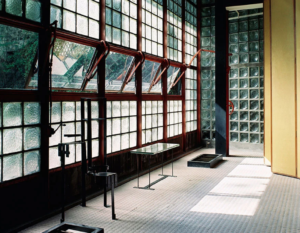
3. And remember, glass blocks emit a warm back lit glow -surround them with warm matte surfaces rather than saturated glossy ones.

The Mare Salon by The Archers
3 Types of Construction for Manufactured Glass Block Windows
- The least expensive glass block window is when the glass blocks are just stacked on top and next to each other with nothing in-between.
- The most popular option is when the blocks are stacked with a layer of mortar and sand between them. This provides great security. The only downside we’ve found is the mortar could crumble if the foundation settles.
- The fanciest of glass block windows are the ones with vinyl spacers. Obviously, these ones are the most expensive option, but they are said to be 20% more energy efficient and more waterproof than the other options.
1. Ultimate Privacy
Glass block windows are usually installed in basements, garages, and bathrooms. We often store valuables in garages and basements – and I don’t think I need to go into detail as to why we need privacy in bathrooms…
Because glass blocks are thick and wavy – although those “waves” come in a variety of designs – it’s impossible to make out anything on the other side. Even if you get right up to the glass block to look inside, you’ll only see fragments of images.
If you have regular windows in your basement you most likely also have blinds or curtains. Our goal is to have our fourplex be as low maintenance as possible. I don’t want to worry about needing to clean curtains or blinds in the basement of our multifamily down the road. We offer on-site storage in our fourplex basement. Now that we have glass block windows, our residents can rest easy that potential intruders can’t see what they’re storing.
2. Let There Be Light
Because we now have glass block windows and there is no need for blinds or curtains to protect the privacy of the space there is so much more light in the basement! I mean – so much more!
Additionally, when we removed our old regular windows we also removed the old sill and side jambs. Without the vinyl frame and window jambs, our window space is noticeably larger – which means even more light.
3. Safe and Secure
It isn’t impossible to break into glass block windows, but it sure is a hell of a lot harder to break into glass block windows than regular windows.
Breaking into regular windows is fairly easy and if the burglar is a professional, it can be done with little to no noise.
Breaking thick glass blocks would be pretty loud. Additionally, even if the intruder broke down one of the glass blocks, that wouldn’t be enough space for an adult to squeeze through.
4. Rain, Rain, Go Away
Because glass block windows are comprised of glass and mortar or glass and vinyl, depending on your window, they are essentially waterproof – especially with the latter. If you’re in an area that is prone to flooding, glass block windows are a great option and investment.
5. Energy Efficient – Need We Say More
Well, yes, we should say more, because you’re probably wondering how they’re energy efficient.
Inside each glass block is an air gap – I’ve read that this air gap is somewhere around 3″. The blocks are created under heat by infusing two halves together. When the blocks and the air inside the gap cool an insulating space is created inside the block. When you have a whole window full of these insulating spaces you’ve got one mighty energy efficient window!
Some glass block windows are Energy Star compliant. Most glass block windows have about the same efficiency as thermal-pane windows, double the efficiency of single-pane windows, and are airtight, especially if you opt for the most expensive vinyl spaced glass block windows.
No more drafty basements!
6. Ok – So They Have Great Function – But What About Their Beauty? Are Glass Block Windows a Design No-No?
The intense wavy glass block windows of the 80s are probably still available for purchase, but you’re not limited to this dated look!
Now glass block windows not only come in a variety of textures and colors but also sizes! Think about all the great designs you can make with tile and pavers – the same can be done with glass block windows.
I know, I know, I was skeptical. But as a relatively young investor, I thought I would give function over form a try. I’m super pleased because I think they not only have a great function but they look really pretty as well.
Our basement windows are now bigger and the texture bounces light around on the outside. Our curb appeal definitely hasn’t suffered. And what a selling point to potential tenants: your storage cages will be filled with light and will be very secure.
As with most things, use glass block windows in moderation. I’m not sure I’d be into a glass block wall inside my house or a giant glass block living room window, but they totally have their place in residential and multifamily homes!
7. Ok! I’m convinced! It’s On the ‘To-Do Home Improvement List” -but how much will this set me back?
Not too much! I called around in the Columbus, OH area and the average price to have the mortar glass block windows installed would be approximately $189 each. Nick negotiated with one sales guy and got it down to $164 installed.
The money you’ll save on energy bills and the peace of mind you’ll gain – I think it’s well worth it.
Oh! One last tip: you can add vents to your glass block windows and, in fact, some building codes require it for certain areas of the basement. So check your local building codes. To add a vent to a window will set you back about $50.
GLASS BLOCK WINDOWS MISCONCEPTIONS
They’re Tough to Construct
Sure…if you’re trying to construct glass blocks as a weekend DIY project.
Nick and I are pretty darn handy, but when we decided we wanted to install glass block windows in our basements we knew this was a job for a professional. If laid incorrectly, they could leak and their durability could be compromised.
Constructing a glass block window is a lot like bricklaying, which is a learned skill. Unless you’re down for a very involved DIY project that has some very real consequences and will probably take you longer than a weekend, leave the installation of this product to the professionals.
Glass Block Windows Only Work for Certain Climates
We already discussed that glass block windows are excellent insulators so just be mindful of where you install them. We live in the Midwest. While it’s very cold here in the winters our summers can get super hot! If you install glass block windows in your basement, just make sure nothing is directly in front of the window that could get damaged during those hot summer months.
As mentioned before, consider keeping the area you dedicate to glass blocks on the smaller side. If you do an entire wall in glass blocks in a small bathroom, that bathroom will heat up very easily in the summer months and make the room uncomfortable.
When installed strategically, you can use these natural insulators to your advantage. Just be thoughtful.
Glass Block Windows Don’t Allow Ventilation
Some will argue that glass block windows don’t allow ventilation. Well, this is true if you don’t pair them with other means for ventilation OR get them installed with a vent.
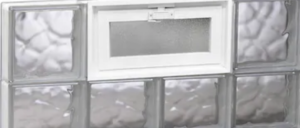
Sure, if you choose to make every window in your home a glass block window, you won’t have great ventilation throughout.
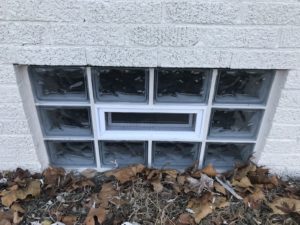
So….don’t make every window in your home a glass block window….and you’ll be fine. 😉
What to take on Glass Block Windows
I initially sat down to write this post about all the amazing reasons why you should absolutely consider glass block windows for your basement windows. And, in the process, I learned so much about their history and the ways architects and designers have used them as beautiful works of art in commercial and residential settings.
They’re inexpensive, great insulators, and making breaking in near impossible -these little blocks deserve to be thought of more than just a major faux pas of the 80s.
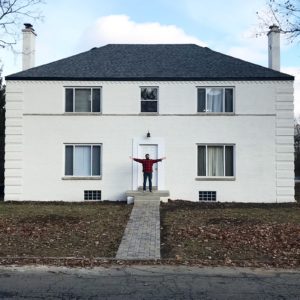
Well, thoughts? Do you still only see Miami Vice reruns in your head when you think of glass block windows? Or do you see their value and think, in modest amounts, these little glass blocks deserve a little more credit?


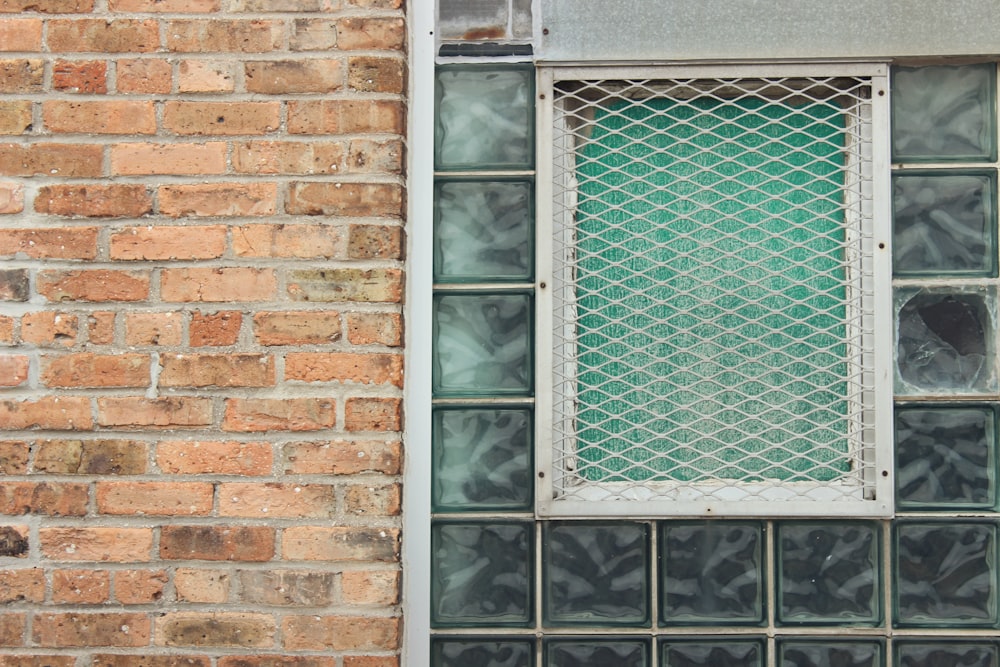
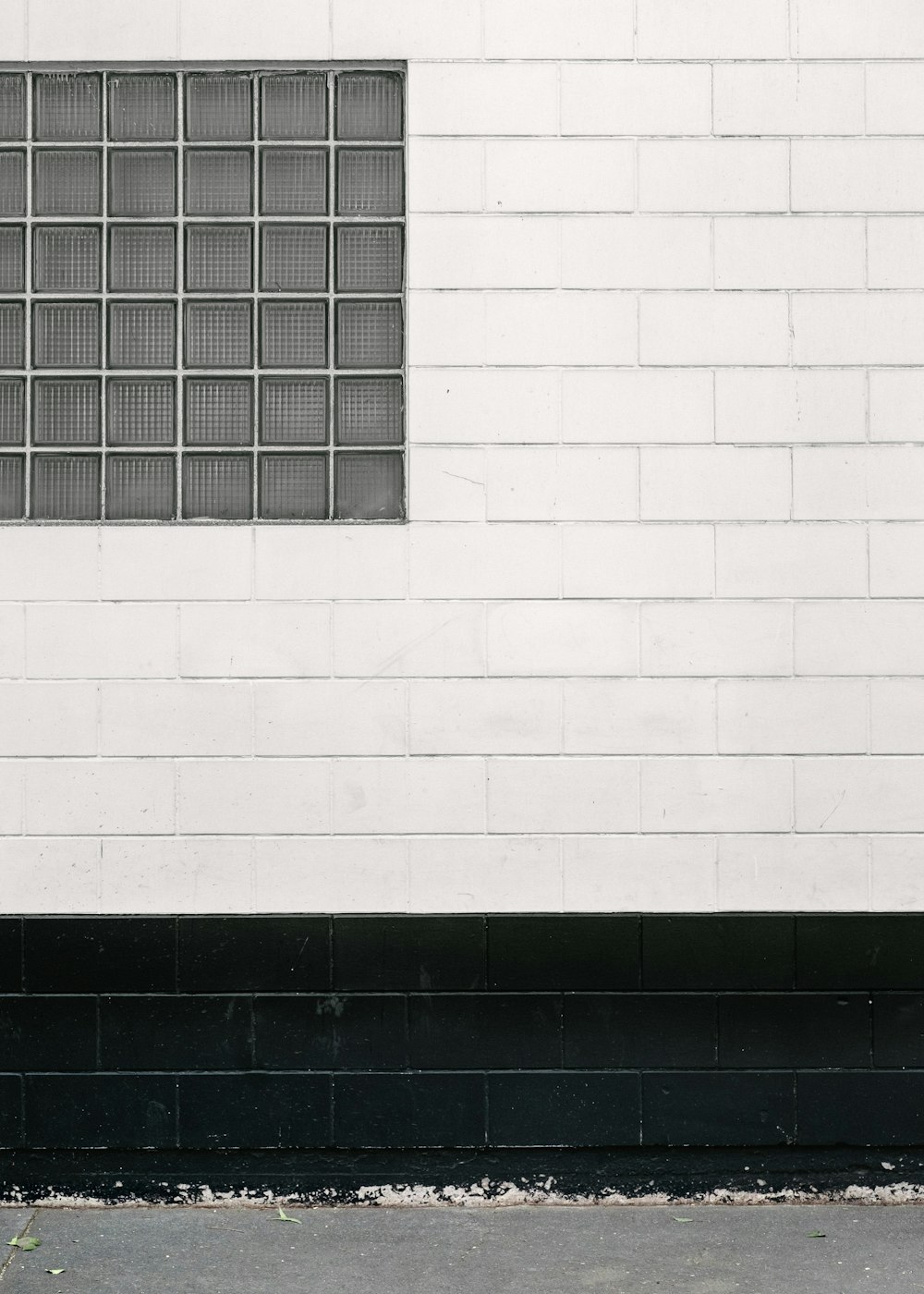
No Comments